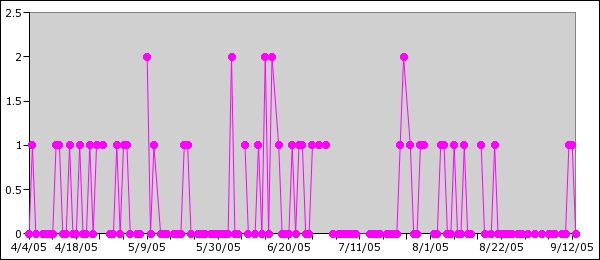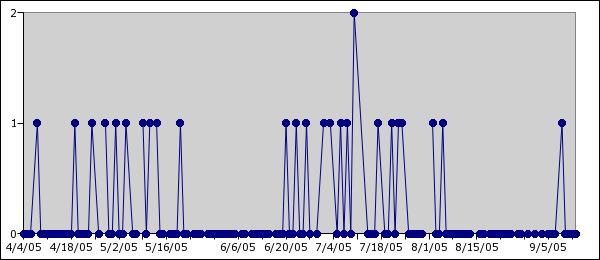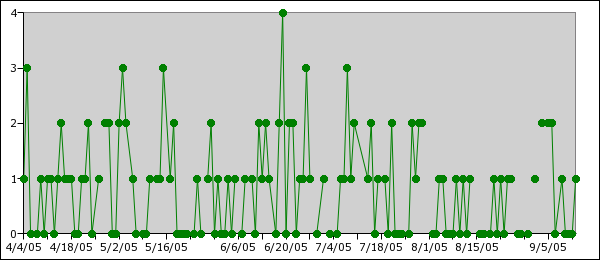I do not aim to determine whether Hinske will ever be a good player. He is certainly a useful player, even now — except in June, of course. Instead, I want to figure out just when he becomes useful, and maybe a bit of why too.
As I discovered on Sunday, #11 has produced ≥ 22 strikeouts every month this year except for August. Not coincidentally, August was also by far his most productive month: he hit .348/.413/.500 in 66 at-bats.
The problem with the splits available is that they arbitrarily show the numbers from specific months. You wouldn't expect a player to change his production level only on month boundaries, so we have to dig a little bit deeper into what actually happened to discover when Eric's production changed.
Here is what I discovered:
Eric Hinske's Walks, for each game of the season:

Eric Hinske's Doubles, for each game of the season:

Eric Hinske's Strikeouts, for each game of the season:

That is a bit to digest. First, note that Eric strikes out a lot, especially when he's going poorly (as he did in June). He even has a platinum sombrero mixed in among all those hat-tricks. And yes, his June was awful, but it all started about May 21, since on May 20th he hit a double, and then on June 20th he hit another. Seriously. A month between doubles.
Most interesting is the union of those graphs, though, which for technical reasons I am going to allow you to imagine. At the depths of his awful June, Eric was drawing more walks (and more strikeouts) than at any other time. Then, and here I am supposing a bit, on June 20 he started seeing the ball better; alternately, the league started figuring that he'd lost it, and threw him a bunch of fastballs right down the middle. Either way, he started seeing balls he could hit, and hit them he did — forgetting almost entirely the walk (but not the strikeout).
Since August 2, though, he's been in another month-long doubles drought. To compensate, it seems that he started taking more pitches and getting more walks. The league may have wisened up a bit; alternately, Eric might have stopped seeing the ball as well as he had been. Or maybe it's a combination of the two.
I'll leave it in your capable hands, Bauxites. What have you seen Eric doing differently?













